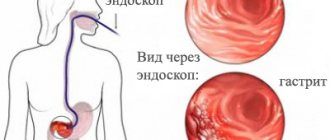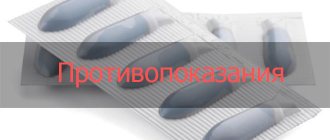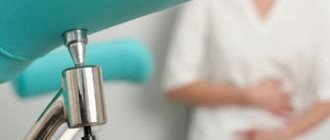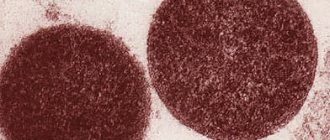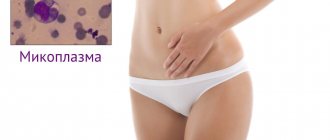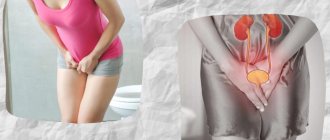Adnexitis (salpingoophoritis) is an inflammation of the uterine appendages - the ovaries and fallopian tubes.
The disease can be acute or chronic . As a rule, undetected or untreated acute adnexitis passes into the chronic phase in time.
Salpingo-oophoritis is dangerous due to purulent complications, as well as the occurrence of adhesions and, as a consequence, obstruction of the fallopian tubes. This leads to female infertility, miscarriage, and ectopic pregnancy.
The disease sometimes occurs without pronounced symptoms - in about 20% of cases, and is detected already at the stage of the adhesive process. Therefore, it is better to visit a gynecologist on time and get tested for infections than to undergo long-term treatment for infertility.
Treatment of acute adnexitis
Acute manifestations of adnexitis are treated in a gynecological hospital, while the patient is kept in bed. Treatment of inflammation of the appendages is carried out with antibiotics, painkillers, and anti-inflammatory drugs. When selecting antibacterial agents, the doctor gives preference to drugs with a long half-life, using drugs from different groups.
At the beginning of treatment, preference is given to the intravenous or intramuscular method of administering antibiotics, then the oral method is practiced - therapy using tablets.
To relieve the consequences of intoxication of the female body with waste products of pathogenic bacteria, the patient is administered:
- Glucose;
- Protein solutions;
- Reopoliglyukin;
- Hemodez;
- Physiological fortified solution.
To relieve pain, analgesics, suppositories with analgesic and anti-inflammatory effects, and cold applied to the abdominal area are used. After the symptoms of acute inflammation are relieved, the patient is prescribed physical therapy - electrophoresis with calcium, magnesium, copper. After 2-3 months, the achieved results are consolidated by treatment in a sanatorium of the appropriate profile.
Classification
Experts divide adnexitis into several stages, which depend on the severity of symptoms. Let's look at them in more detail:
- Acute stage. Occurs when the inflammatory process develops due to infection in the genitals and decreased immunity.
- Subacute left-sided adnexitis. It does not occur as often as other forms of the disease. The signs are similar to the acute course, but the symptoms are not so pronounced.
- Chronic stage. It usually occurs due to an untreated acute form of the disease. It is characterized by periods of exacerbation and subsidence of accompanying symptoms. The menstrual cycle is greatly disrupted. This stage of adnexitis can lead to infertility.
- Purulent form. Occurs due to the activity of various bacteria. A very dangerous stage of adnexitis that requires immediate treatment.
Treatment of chronic adnexitis
The treatment regimen for chronic adnexitis varies depending on what stage the disease is at - in the acute stage or in remission.
Indications for prescribing antibacterial drugs:
- Treatment of recurrent adnexitis;
- Lack of antibacterial therapy in the phase of acute adnexitis;
- High risk of exacerbation of disease symptoms during physiotherapeutic treatment.
Additionally, analgesics, suppositories to eliminate inflammation and pain, vitamins, and drugs to prevent adhesions are prescribed.
Treatment procedures and measures for the treatment of chronic adnexitis:
- Physiotherapy UHF, amplipulse therapy, electrophoresis with iodine, zinc, magnesium;
- Mud therapy and treatment with sodium chloride and arsenic waters (indicated for simultaneous adnexitis and endometriosis, fibroids);
- Radon and iodine-bromine baths (indicated when adnexitis is combined with hyperestrogenism);
- Acupuncture;
- Physiotherapy;
- Psychotherapy;
- Diet excluding salty, fatty and fried foods.
To prevent exacerbations of chronic adnexitis, it is recommended to avoid hypothermia, emotional and physical overload.
Symptoms of salpingoophoritis
Acute adnexitis occurs with severe symptoms:
- A significant increase in temperature - from 37.5C to 39C.
- Severe pain in the lower abdomen. It has a cutting, piercing character. As a rule, it radiates (gives) to the thigh, rectum, and sacrum. The intensity and nature of the pain does not change in any position.
- Pathological vaginal discharge. They may be green, foamy, and have an unpleasant odor. Such vaginal discharge often indicates that the causative agent of the disease is an STI. In this case, bilateral adnexitis is more often observed.
- Frequent urge to urinate or defecate.
- Pain while urinating.
- Symptoms of intoxication. Chills, weakness, apathy, nausea (maybe to the point of vomiting), headache.
The presence of acute symptoms, although quite painful, is not bad for the prognosis of the disease - a woman has a chance to immediately seek medical help and receive adequate treatment. Timely and well-treated adnexitis can go away without consequences.
Subacute course:
- Pain of moderate intensity, which intensifies with walking or physical activity.
- Low-grade fever.
- General health is satisfactory.
If a woman, in the presence of acute symptoms, self-medicates or does not complete the course prescribed by the doctor, the disease enters the chronic phase. The same can happen in subacute cases if a woman ignores ailments that seem minor and does not see a doctor for a long time. The worst thing is asymptomatic adnexitis, when a woman does not know that she is sick. Meanwhile, inflammation “smolders” in the body, leading to serious problems with reproductive health.
Symptoms of chronic inflammation of the appendages:
- Menstrual irregularities.
- Painful periods.
- Low-grade fever during exacerbation.
- Drawing, aching pain in the lower abdomen.
- Pain during sexual intercourse.
- Decreased libido.
- Characterized by a depressed mental state.
It is very important for a woman to be attentive to her health and not ignore even minor symptoms if they last a long time or occur regularly.
List of medications for the treatment of adnexitis
Salpingitis, or inflammation of the fallopian tubes, is very rare as an independent disease. Most often, this pathology is combined with inflammatory diseases of the uterus and ovaries or is their consequence. In exceptional cases, purulent processes in the inflamed fallopian tubes, ovaries and uterus combine, increasing the risk of sepsis and pelvioperitonitis.
In order to prevent the transition of acute inflammation into a chronic form, the occurrence of complications such as infertility, abscess, pyosalpinx, and the formation of adhesions, it is necessary to prescribe antibacterial drugs immediately after diagnosis.
Before starting treatment for adnexitis, it is necessary to determine which infectious agent caused the inflammatory process. These can be anaerobic and gram-positive bacteria, chlamydia, mycoplasma, gonococci, streptococci. Bacterial culture of secretions taken from the cervical canal will help determine the sensitivity of the pathogen to antibiotics.
Groups of antibacterial drugs for the treatment of acute adnexitis:
- Cephalosporins – Cefotaxime, Ceftriaxone, Cefoxitin;
- Inhibitor-protected penicillins – Amoxicillin / Clavulanic acid, Ampicillin / Sulbactam;
- Tetracyclines – Doxycycline;
- Inhibitor-protected cephalosporins – Cefoperazone / Sulbactam;
- Macrolides - Erythromycin, Azithromycin, Roxithromycin, Clarithromycin, Spiramycin;
- Fluoroquinolones – Ciprofloxacin, Ofloxacin;
- Nitroimidazoles – Ornidazole, Metronidazole;
- Aminoglycosides – Gentamicin;
- Lincosamides – Clindamycin;
- Carbapenems – Meropenem, Imipenem.
Causes of the disease
Inflammation of the appendages is always caused by pathogenic microorganisms - staphylococcal, streptococcal, intestinal, fungal, tuberculosis infections and any STIs (sexually transmitted infections).
Infection can occur from the outside - through unprotected sexual intercourse, swimming in dirty water, careless performance of intimate hygiene procedures. In this case, we are talking about the ascending route of transmission of infection - that is, from the vagina to the internal genital organs.
The external and internal genital organs themselves are not sterile - they contain their own microflora, which may also contain opportunistic bacteria, such as staphylococcus. During normal functioning of the immune system, the body maintains a balance of microflora, when the number of “good” microorganisms exceeds the number of pathogenic ones. However, when the immune system is weakened, the pathological flora begins to multiply rapidly, causing inflammation. Various unfavorable factors can provoke a decrease in the immune response - ARVI, systemic diseases, hypothermia, stress. It’s not for nothing that people know that sitting in the cold leads to “women’s diseases.” Of course, the disease is not caused by cold, but by an immune failure caused by hypothermia.
Microbes and viruses can enter a woman’s internal genital organs from other body systems in which there is a source of infection. This could be the kidneys, bladder, tonsils, or any other organ. Microorganisms spread from the diseased organ through the circulatory and lymphatic systems, entering the fallopian tubes and causing inflammation of the woman’s internal genital organs. In this case, they talk about the downward spread of the disease.
What factors can lead to salpingoophoritis:
- Early onset of sexual activity.
- Promiscuous sexual intercourse without barrier protection.
- Failure to comply with hygiene requirements.
- Sexual life during menstruation.
- Untimely replacement of the intrauterine device. The IUD itself is a risk factor for the penetration of pathogens from the cervix into its cavity, and then into the tubes. And if the period of use of this contraceptive exceeds the established period, this can lead not only to adnexitis, but also to an abscess of the ovary and tube, and even peritonitis.
- Conditions of reduced immunity. These can be systemic diseases, oncological processes, endocrine pathologies, tuberculosis, HIV.
- Stress. Severe or prolonged stress leads to depletion of the immune system and the development of inflammation.
- Gynecological invasive interventions. Abortions, diagnostic curettages, postpartum traumatization.
- Acute and chronic bacterial and viral infections. Sore throats, pyelonephritis, ARVI (including influenza), etc.
- Hypothermia. Working in unfavorable conditions, wearing inappropriate clothing, swimming in cold water.
Symptoms and treatment of adnexitis depend on its type.
Treatment regimens for adnexitis
Therapy for salpingoophoritis is carried out according to a certain scheme. The dosage of drugs is adjusted according to the woman’s age and the stage of the inflammatory process.
Options for antimicrobial treatment regimens for adnexitis:
- A combination of Ceftriaxone (2 times a day) or Cefoxitin (1 time a day) with Doxycycline. The course of treatment with cephalosporins lasts 48 hours or more and is discontinued immediately after the patient’s condition improves. Doxycycline is taken for at least 2 weeks in a row.
- If infection with a mixed pathogenic flora is suspected or in severe forms of adnexitis, Metronidazole is added to the two drugs from the previous regimen.
- Step therapy - Clindamycin IV every 8 hours in combination with Gentamicin IV or IM 3 times a day is replaced every other day by oral administration of Doxycycline (2 times a day) or Clindamycin (4 times a day) in combination with Metronidazole. The course of treatment lasts 14 days.
- Stepped therapy, scheme 2 - injections of inhibitor-protected penicillins (Ampicillin / Sulbactam) IV 4 times a day are replaced by oral Doxycycline.
- Ceftriaxone or Cefotaxime in combination with Metronidazole.
- A combination of protected penicillins (Amoxicillin / Clavulanate or Ampicillin / Sulbactam) or protected cephalosporins (Cefoperazone / Sulbactam) with antibacterial drugs from the macrolide group (Spiramycin, Erythromycin, Clarithromycin).
- Combination of Metronidazole + cephalosporins with drugs of the macrolide class (used for intolerance to Doxycycline).
- Fluoroquinolone therapy - Metronidazole in combination with Ofloxacin or Ciprofloxacin, plus Doxycycline or a drug from the macrolide group. Used for patients over 18 years of age.
- Treatment of severe adnexitis is a combination of carbapenems (Imipenem or Meropenem) with Doxycycline or antibacterial agents from the macrolide group.
- Treatment of adnexitis caused by gonococcus - Ceftriaxone (or Cefoxitin) + Metronidazole + Doxycycline in combination with Probenecid, which increases the concentration of antibacterial drugs in the blood plasma. Cephalosporin and Probenecid are taken once, the course of treatment with Metronidazole and Doxycycline lasts 2 weeks. If there are contraindications to the use of cephalosporins for gonococcal infections, Azithromycin is prescribed.
- Therapy of tubo-ovarian abscess - Clindamycin is included in the treatment regimen.
Treatment of adnexitis with minimal symptoms is carried out with oral medications that have high bioavailability:
- Azithromycin (1000 mg) at the beginning of treatment, replacing it with Clindamycin.
- Drugs from the penicillin group (Amoxiclav, Augmentin, Flemoklav) + Doxycycline (replaced with macrolides if intolerant).
- Fluoroquinolones (Ciprofloxacin) + macrolides (Rovamycin, Clarithromycin) + Metronidazole.
- Ofloxacin in combination with Ornidazole.
- Fluoroquinolones (Ciprofloxacin, Ofloxacin) + Doxycycline.
- Ciprofloxacin + Doxycycline + Clindamycin.
- Treatment of adnexitis caused by chlamydia - Doxycycline, or Ofloxacin, or macrolides (Josamycin, Azithromycin).
- Treatment of adnexitis caused by gonococcus - cephalosporins or macrolides (Ceftriaxone, Cefotaxime, Azithromycin), if there are contraindications, are replaced with fluoroquinolones (Ciprofloxacin).
- Treatment of adnexitis caused by mycoplasma - Doxycycline, Azithromycin, Moxifloxacin, Ofloxacin, Josamycin.
Definition
Adnexitis is an inflammatory process that occurs in the uterine appendages. Women under 30 years of age are more susceptible to the disease. Most often, left-sided adnexitis is diagnosed, which tends to progress rapidly. If left untreated, a chronic stage of the disease may develop, which often leads to infertility. The most common cause of pathology is infection. In the International Classification of Diseases (ICD-10), left-sided adnexitis has a code of 70.1.
Why are antibiotics necessary for adnexitis?
More than 20% of women who have had adnexitis suffer from infertility in the future; they are 10 times more likely to have an ectopic pregnancy. The consequence of the chronic form of the disease is the formation of adhesions in the pelvic organs, disrupting the blood supply and causing congestion. Pain syndrome becomes an obstacle to a full sexual life.
To avoid such complications, you should consult a doctor to prescribe a treatment regimen for adnexitis. Independent use of antibacterial agents is unacceptable, as is the use of suppositories. This form of medication with analgesic and anti-inflammatory effects is prescribed as an adjunct to antimicrobial therapy.
Purpose of using candles:
- Elimination of pain syndrome;
- Decrease in temperature;
- Relief of inflammation;
- Prevention of the formation of adhesions.
The minimum course of treatment for adnexitis is 10-14 days. If an STD is suspected, a thorough examination and simultaneous treatment of the woman and her sexual partner are required.
Diagnostics
Diagnostic stages:
- Usually this problem, such as salpingoophoritis or adnexitis, does not cause difficulties for an obstetrician-gynecologist. To make a diagnosis, first of all, you need to consult a doctor and talk with him. It is the gynecologist who clarifies the woman’s exact complaints, life history, and time of onset of symptoms. In some cases, the doctor may need to clarify sexual behavior, the number of sexual partners, as well as the man’s health and methods of contraception.
- After the interview, the woman begins to be examined in mirrors and with both hands. You can detect copious discharge from the genital tract, mainly of a pathological nature. The uterus may be painless, but if it becomes involved in the inflammatory process, it will become sensitive or painful. But the lateral sections will be painful, as well as the area of the appendages. In an acute process, the appendages may be enlarged, and sometimes the area of the fallopian tubes can be felt.
- Laboratory tests are also used. Of these, the main one is a general blood test with a leukocyte formula. Leukocytosis is detected, as well as an increase in the erythrocyte sedimentation rate.
- If the function of other organs is impaired or the urinary and digestive systems are involved, a biochemical blood test is performed.
- Among the instrumental methods, the well-known and non-invasive method of ultrasound examination of the pelvic organs is very popular. This method assesses the size of organs, the degree of blood supply, as well as signs of the inflammatory process and the exclusion of space-occupying formations in the ovaries. You can also determine the presence of fluid in the posterior fornix, which is one of the symptoms of inflammation; this is an effusion of plasmatic contents. In case of a chronic process and menstrual dysfunction, ultrasound examination is of great importance; it determines the functioning of the ovaries and the possibility of follicle maturation.
- Invasive instrumental methods include puncture of the posterior fornix. This is necessary for the differential diagnosis of a space-occupying formation, as well as a possible massive purulent process. With severe inflammation. You can also get fluid from the posterior fornix. Also, in case of severe condition and impairment of vital functions, a laparoscopic examination is performed. In some cases, it may immediately have a therapeutic purpose.
- In case of complex differential diagnosis, they may resort to a less common and more expensive study - magnetic resonance imaging. She can accurately determine signs of inflammation or the presence of voluminous or diffuse purulent formation.
Treatment of adnexitis in pregnant women
When treating salpingoophoritis during pregnancy, the following groups of drugs are excluded from the treatment regimen:
- Tetracyclines – Doxycycline;
- Aminoglycosides – Gentamicin;
- Lincosamides – Clindamycin;
- Fluoroquinolones – Ciprofloxacin, Ofloxacin.
Metronidazole should not be taken in the first trimester of pregnancy. In the second and third trimesters, its use is possible only after an informed decision by the attending physician. If a pregnant woman has adnexitis caused by chlamydia, it is treated with Erythromycin, Azithromycin, Josamycin, Spiromycin. Amoxicillin is prescribed as an alternative.
Surgical intervention
Surgery may be indicated in cases where other treatment methods have not brought a positive effect, or when a woman’s condition worsens with the development of a purulent process.
The purpose of surgical treatment will be to preserve reproductive function, remove purulent lesions and adhesions, and restore tubal patency. In most cases, laparoscopic surgery is used, which is more gentle. In advanced cases, the doctor may decide to remove the affected organ or part of it.
Complications
First of all, left-sided adnexitis has a negative impact on a woman’s reproductive function. More advanced stages of the disease can lead to infertility. If pregnancy occurs, there is a high probability of its pathological course. Complications include ectopic pregnancies or early miscarriages.
With the development of purulent adnexitis, infection may spread into the abdominal cavity.
Traditional medicine and diet
In addition to traditional methods of treatment, it is possible to use traditional medicine that can help relieve inflammation and speed up recovery.
Medicinal herbs used in the treatment of adnexitis are used in the form of infusions and decoctions. The following plants have proven themselves well:
- Borovaya uterus.
- Rosemary.
- Rose hip.
- Chamomile.
- Dandelion.
- St. John's wort.
- Calendula.
- Oak bark.
It is important to remember that you can use any medicinal herbs only after consulting your doctor.
In addition to the above treatment methods, it is necessary to adhere to a certain diet that excludes allergenic, fatty, and spicy foods. It is recommended to consume vegetables and fruits rich in vitamin C and fermented milk products. In this case, you need to give up sweets and salty foods and limit the consumption of coffee, carbonated drinks and baked goods.
Prevention and prognosis
To exclude the development of pathology, it is necessary to adhere to a number of recommendations:
- Systematic visit to the gynecologist.
- Timely treatment of all diseases.
- Compliance with personal hygiene rules.
- Elimination of stress and hypothermia.
- Use of contraception.
- Prevention of abortion.
- Refusal to wear tight underwear. Give preference to cotton fabrics.
If you contact a medical facility in a timely manner and treatment is started on time, the prognosis for left-sided adnexitis will be favorable. Therefore, you need to listen to your body and, if signs of the disease appear, undergo all the necessary tests.
